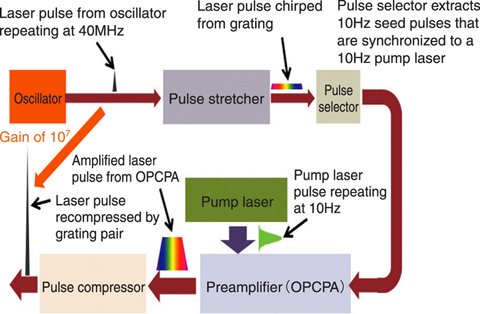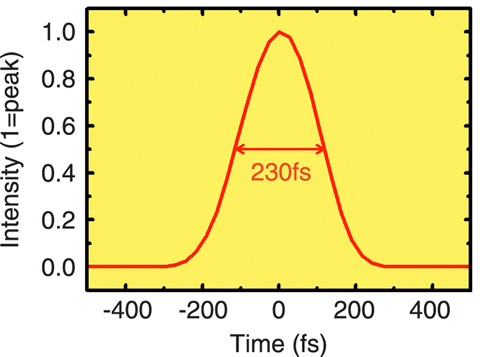
Fig.11-5 Block diagram of new laser system

Fig.11-6 Recompressed pulse wave form
At the JAEA Photo Medical Research Center (PMRC) we are developing a compact ion accelerator for cancer therapy using a laser-driven plasma point source of ions. The high energy ions needed to treat cancerous tissue at a typical depth from the human body surface (~20cm) requires repeated short and intense laser pulses. Systems meeting these requirements are typically of the "chirped pulse amplification" (CPA) type which means that the pulses are temporally stretched or 'chirped' to reduce intensity during amplification and finally recompressed. High laser repetition rates (100Hz or more) are desirable, in order to deliver sufficient total dose within 10min. The limited ability of laser materials to dissipate heat has limited the acceleration of high energy ions to large systems (~100m long) with low repetition rates (a few shots a day). Also, though these recompressed laser pulses are of short duration (< 1ps), they may be preceded by lower power emissions (largely from amplified spontaneous emission) that can reduce ion acceleration, especially if preamplifiers are of the regenerative type (RA). A compact laser system that is suitable for cancer treatment has not yet been developed. To increase repetition rate and reduce the prepulse energy, we are developing a new laser design (emission at 1030nm) which will be pumped by high power 940nm laser diode (LD). As a first stage of this new development, we have demonstrated the feasibility of a CPA system that uses a different kind of preamplifier called an optical parametric chirped pulse amplifier (OPCPA).
Fig.11-5 is a diagram of our novel CPA laser system with which we have achieved amplification of laser pulses of short duration at a wavelength of 1030nm. 10Hz low energy 'seed' pulses from an Yb doped oscillator source were amplified in a single pass through the OPCPA preamplifier unit to over 6.5mJ, representing a net energy gain of 107, achieved with crystal of 56mm total length. Then, these high gain laser pulses were recompressed to a 230fs duration as shown in Fig.11-6. Formerly, under these conditions the recompressed pulse amplitude using a regenerative preamplifier would have been limited to about 1.5-2 times larger than that of the laser seed pulse from the oscillator, a well-known effect of gain narrowing. For laser-driven ion acceleration the amplified laser pulse from the OPCPA unit (not yet recompressed) will be further amplified in the next stage in a thin Yb:YAG crystal pumped by a high power LD at a 100Hz repetition rate.
This work was supported by the Special Coordination Fund (SCF) for Promoting Science and Technology managed by the Ministry of Education, Culture, Sports, Science and Technology of Japan (MEXT), and was done in collaboration with Central Research Laboratory, Hamamatsu Photonics, K.K..
<Previous: 11-1 | Next: 12 Computational Science and E-Systems Research >